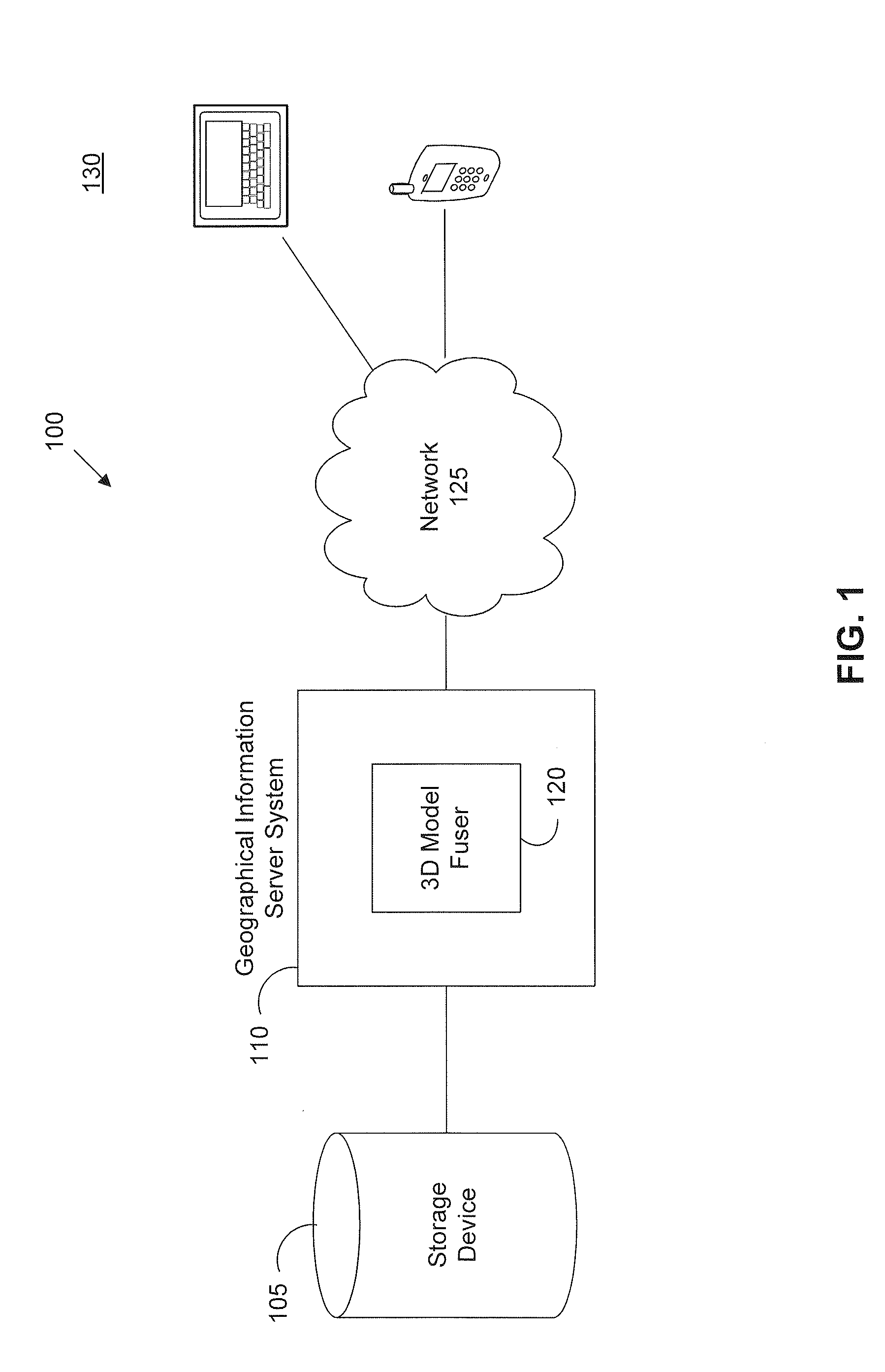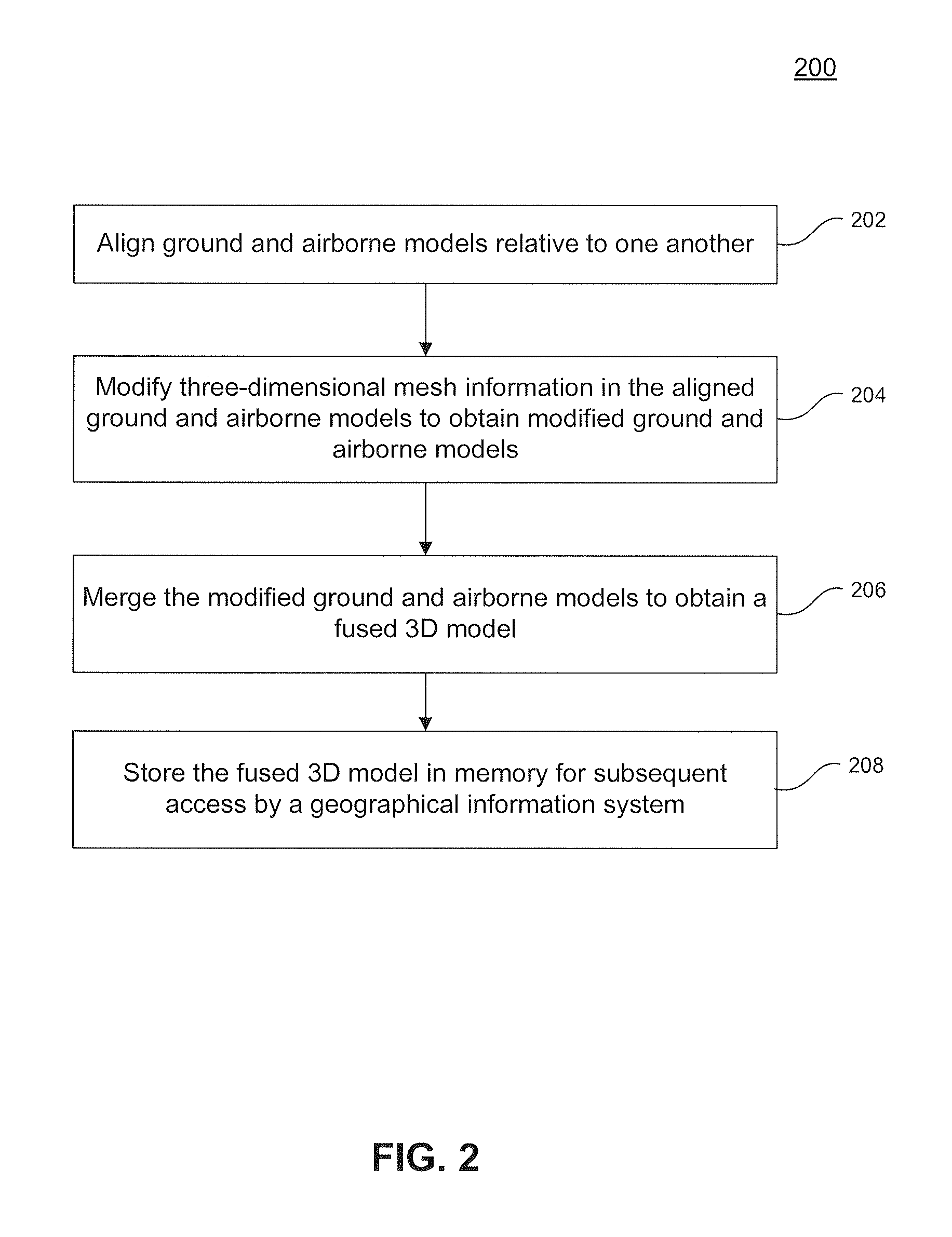Fusion of ground-based facade models with 3D building models
- Summary
- Abstract
- Description
- Claims
- Application Information
AI Technical Summary
Benefits of technology
Problems solved by technology
Method used
Image
Examples
example computer embodiment
[0055]In an embodiment, the system and components of embodiments described herein are implemented using well known computing devices, such as the example computer 602 shown in FIG. 6. For example, geographical information server system 110 and 3D model fuser 120 can be implemented in software, firmware, hardware, or a combination thereof on one or more computer(s) 602.
[0056]The computer 602 can be any commercially available and well known computer capable of performing the functions described herein, such as computers available from International Business Machines, Apple, Sun, HP, Dell, Compaq, Cray, etc.
[0057]The computer 602 includes one or more processors (also called central processing units, or CPUs), such as a processor 606. The processor 606 is connected to a communication infrastructure 604.
[0058]The computer 602 also includes a main or primary memory 608, such as random access memory (RAM). The primary memory 608 has stored therein control logic 626A (computer software), an...
PUM
 Login to View More
Login to View More Abstract
Description
Claims
Application Information
 Login to View More
Login to View More - R&D
- Intellectual Property
- Life Sciences
- Materials
- Tech Scout
- Unparalleled Data Quality
- Higher Quality Content
- 60% Fewer Hallucinations
Browse by: Latest US Patents, China's latest patents, Technical Efficacy Thesaurus, Application Domain, Technology Topic, Popular Technical Reports.
© 2025 PatSnap. All rights reserved.Legal|Privacy policy|Modern Slavery Act Transparency Statement|Sitemap|About US| Contact US: help@patsnap.com



